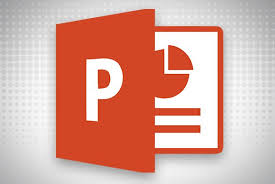 The best graphics don’t make a presentation. Regardless of how graphic-heavy a presentation is, it will still contain important text. With all the grand formatting and animation tools, you might want to throw a bit of a party and see how many different fonts and the like you can use. At the risk of spoiling the fun, don’t. The 5 tips covered in this article will help guide you to produce elegant and easy-to-read content. I’m using Microsoft 365 desktop on a Windows 10 64-bit system, but you can use an earlier version. For your convenience, you can download the demonstration .pptx and .ppt files. These tips apply in both the desktop and web versions.
The best graphics don’t make a presentation. Regardless of how graphic-heavy a presentation is, it will still contain important text. With all the grand formatting and animation tools, you might want to throw a bit of a party and see how many different fonts and the like you can use. At the risk of spoiling the fun, don’t. The 5 tips covered in this article will help guide you to produce elegant and easy-to-read content. I’m using Microsoft 365 desktop on a Windows 10 64-bit system, but you can use an earlier version. For your convenience, you can download the demonstration .pptx and .ppt files. These tips apply in both the desktop and web versions.
A note on fonts in general
Regardless of which app you’re using, you have three types of fonts from which to choose: Serif, sans serif and display. You’ll need to know about them to choose the right ones. It’s quite alright to choose the default, which for now is Calibri, a sans serif font. It’s the default for a reason.
Serif is old school: You’ll find it in print books, newspapers and so on. By old school, I don’t mean to demean it and say it’s no longer in use, because it is still popular, but in the right medium — the world of print. Serif fonts have small bars attached to the main part of the letter called serifs. This is a classic look and best used for formal or traditional content. You’ll find few uses for serif fonts in a PowerPoint presentation.
Sans serif fonts don’t have the small bars. That’s how this type gets its name: Sans in French means without. On screen, this type of font is more readable, not just on laptop screens but also on mobile devices and tablets. You probably already know that a sans serif is the best choice for textual content when displaying on screen.
Display fonts are usually large and make a visual statement. You’ll use these for headings, titles or attracting focus to a specific point. This means the design must fit the moment’s mood, which can be difficult to do. For instance, you don’t want to use the Chiller font on a graduation invitation or a death notice. Now let’s move on to applying these fonts appropriately.
5 tips for font formatting
Choose one sans serif
You might think with so many fonts available that you should try to use several, but don’t. Unless you’re a designer by trade, choose one sans serif font and use it for your body throughout the presentation.
If you decide to add a second font for the main body content, make sure the two are seriously different. If they resemble one another too much, it will look like you made a mistake. In the end, my advice is still the same: Stick with one font for the main body of your content.
Align content to the left
There’s a place for centered and right-aligned content, but the main body of text isn’t it. We read left to right (if your presentation is aimed at a language that reads right to left, adjust this tip accordingly). Fight the urge to center everything, as centered text is the hardest to read of the three alignments. Save it for titles.
Don’t use Justify to distribute text equally between two margins. Instead, leave the right edge ragged. Justify is difficult to read. If you have paragraphs (and you probably shouldn’t) avoid indenting the first line to create more readable content.
Avoid vertical text
Just because the software lets you do something, doesn’t mean you should. Vertical text is a nightmare, and I can’t think of a single reason to use it. You really don’t want to force your audience to crane their necks to read something, do you? If you’re tempted because of a spacing issue, rework things so you have enough horizontal space.
Avoid crowding
The default font size in PowerPoint is 18, and it’s okay to go even larger if needed. Consequently, a slide can hold less text. That’s okay, but don’t be tempted to crowd more text in by changing margins and so on. You want white space; white space improves readability.
For example, you could add two or three more quotes to the demonstration slide, but don’t. Readability will drop and your audience will be lost for a bit while playing catchup. Not only is it more difficult to read, but it is also too much to read at one time.
Avoid text on a busy background
It seems so cool to drop text on top of a picture or graphic, until you realize you can’t see all of the text. There’s just no way around this problem: There’s no color, font type nor font size that will completely remedy this situation. Move the text. If moving the text doesn’t work, then add a lightly transparent background to the text to block out most of the busyness. These tips are easy to implement. Your goal is to keep your audience engaged, and most of the time, keeping things simple is the best way to do so.
For more information on solutions for running your businesses’ technology more efficiently, visit our website or contact Megan Meisner at mmeisner@launchpadonline.com or 813 448-7100 x210.
This was originally posted by TechRepublic
For more information on solutions for running your businesses’ technology more efficiently, visit our website or contact Megan Meisner at mmeisner@launchpadonline.com or 813 448-7100 x210.
This was originally posted by TechRepublic.
.




